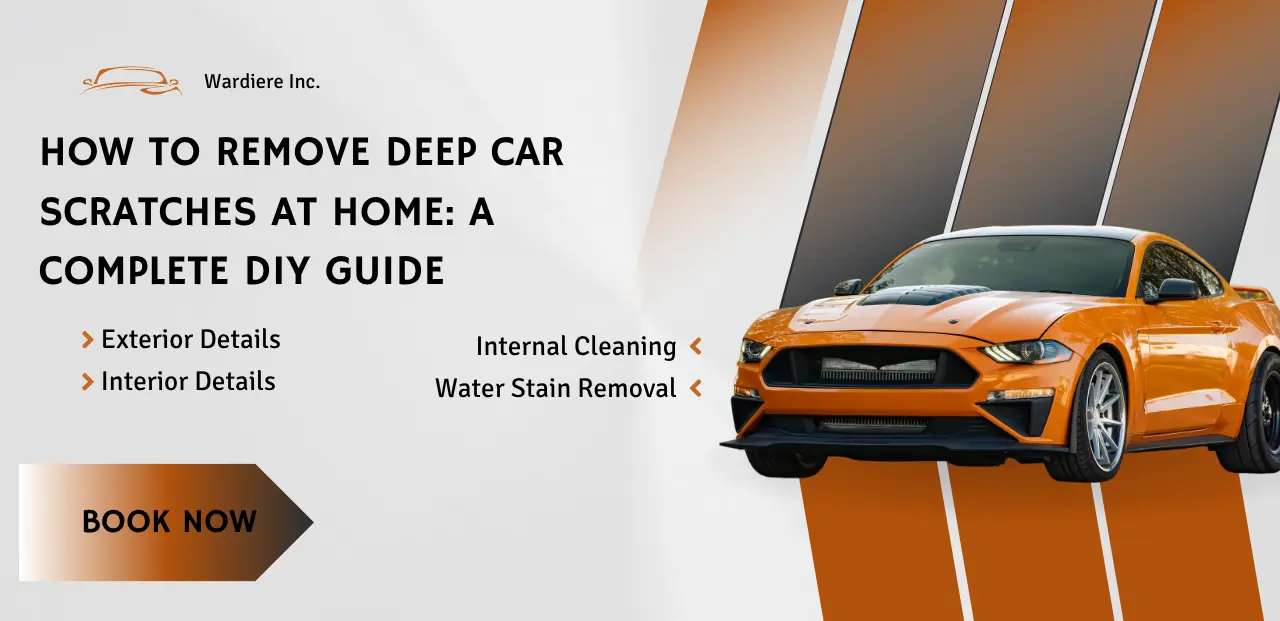Introduction: Dealing with Deep Scratches
Discovering deep scratches on your car can be frustrating. Your vehicle is a valuable investment, and scratches can make it look worn out and reduce its resale value. The good news? You don’t always need a professional to fix them. This guide will walk you through simple, cost-effective methods to remove deep car scratches at home using everyday tools.
Read More About: Sitezzyi
Understanding Car Scratches: Types and Severity
Before attempting any repairs, it’s important to assess the depth of the scratch. Here are the three main types:
1. Clear Coat Scratches
- Cause: Light abrasions from bushes, rough cloths, or small debris.
- Appearance: Surface-level marks that don’t penetrate the paint.
- Fix: Easily repaired with polish or scratch remover.
2. Base Coat Scratches
- Cause: Deeper damage from sharp objects or minor collisions.
- Appearance: Visible color damage but no metal exposure.
- Fix: Requires touch-up paint or a scratch repair kit.
3. Primer Coat Scratches
- Cause: Severe impacts, accidents, or sharp metal contact.
- Appearance: Deep gouges exposing the metal, risking rust.
- Fix: Often needs professional repair to prevent further damage.
6 DIY Methods to Remove Deep Car Scratches at Home
Method 1: Touch-Up Paint Pen
Best for: Small to medium scratches that haven’t reached the metal.
Steps:
- Clean the area with car soap and dry with a microfiber cloth.
- Shake the paint pen well and apply thin layers.
- Let each coat dry before adding another.
- Buff gently to blend the paint.
Method 2: Scratch Repair Kit
Best for: Moderate scratches affecting the base coat.
Steps:
- Wash and dry the scratched area.
- Apply the compound using the included pad in circular motions.
- Buff until the scratch fades.
- Finish with polish or wax for shine.
Method 3: Wet Sanding & Polishing
Best for: Deep scratches exposing the base coat.
Steps:
- Soak 2000-grit sandpaper in water.
- Sand the scratch lightly in straight motions.
- Switch to 3000-grit for a smoother finish.
- Polish and wax to restore shine.
Method 4: Rubbing Compound
Best for: Severe scratches that don’t reach metal.
Steps:
- Clean the scratched area thoroughly.
- Apply rubbing compound with a microfiber cloth in circular motions.
- Buff until smooth, then polish.
Method 5: Nail Polish (Temporary Fix)
Best for: Minor surface scratches.
Steps:
- Clean and dry the area.
- Apply clear nail polish in thin layers.
- Let dry and buff gently.
Method 6: Toothpaste (For Light Scratches)
Best for: Superficial marks on the clear coat.
Steps:
- Clean the scratch with soap and water.
- Apply non-gel toothpaste with a soft cloth.
- Rub in circular motions, then wipe clean.
How to Prevent Future Scratches
- Wash regularly with gentle soap and microfiber towels.
- Use a car cover to protect against environmental damage.
- Park carefully to avoid dings from other vehicles.
- Apply wax every few months for added protection.
- Remove debris immediately (bird droppings, tree sap).
When to Call a Professional
- If the scratch exposes bare metal.
- If DIY methods don’t work.
- If rust starts forming.
FAQs
Q: Can I fix deep scratches myself?
A: Yes, but very deep ones may need professional help.
Q: What’s the easiest way to fix a scratch?
A: A scratch repair kit or touch-up paint works well for most cases.
Q: How long does a DIY repair take?
A: From 30 minutes to a few hours, depending on the method.
Q: Will toothpaste really remove scratches?
A: Only very light surface scratches—it acts as a mild abrasive.
Final Thoughts
Removing deep car scratches at home is possible with the right techniques. Whether you use a touch-up pen, sanding, or a repair kit, these methods can restore your car’s appearance without expensive bodywork. For deep or rust-prone scratches, consult a professional to ensure long-lasting results.
By maintaining your car’s paint and taking preventive measures, you can keep it looking sleek and well-protected for years!


Pingback: Understanding Car Battery Replacement Costs: A Complete Guide - sitezzyi.site